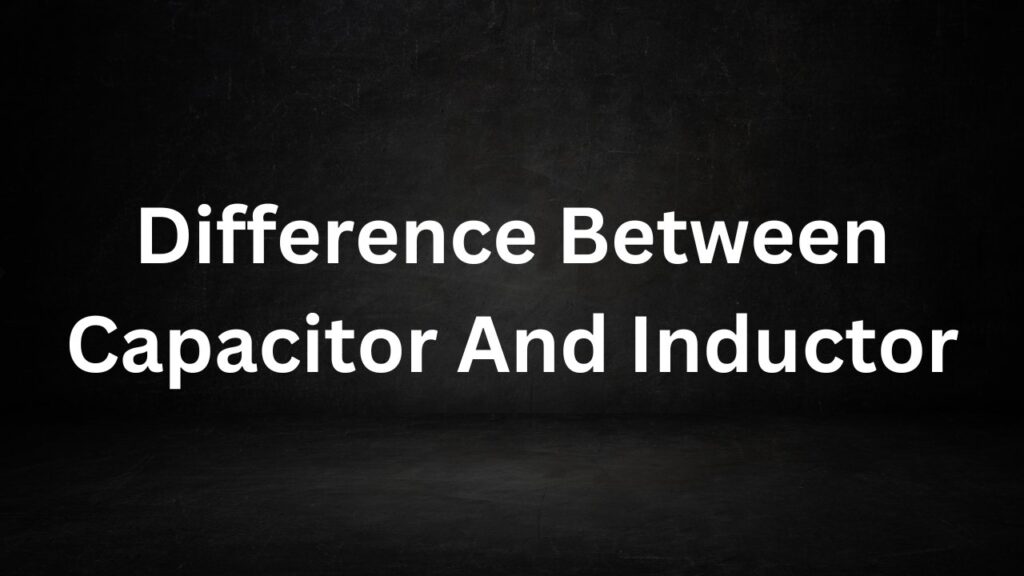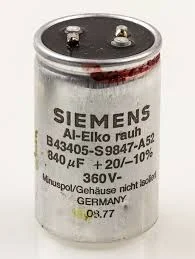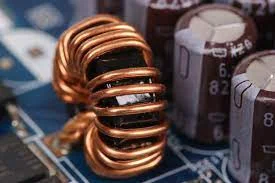Difference Between Capacitor And Inductor
Difference Between Capacitor And Inductor: In the realm of electronics and electrical engineering, two fundamental passive components stand out: capacitors and inductors. These components play pivotal roles in shaping electrical circuits, but they do so in distinct ways.
Understanding the differences between capacitors and inductors is essential for designing and analyzing electronic circuits. In this article, we will explore the key disparities between these two components, their properties, and their applications.

Difference Between Capacitor And Inductor
Capacitors:
1. What Is a Capacitor?
A capacitor is an electronic component that stores electrical energy in the form of an electric field. It consists of two conductive plates separated by an insulating material, known as a dielectric. When a voltage is applied across the plates, electric charge accumulates on them, creating an electric field between the plates. This stored energy can be quickly released when needed.
2. Key Properties of Capacitors:
- Capacity (Capacitance): Capacitance is the measure of a capacitor’s ability to store electrical charge. It is measured in farads (F).
- Voltage Rating: Capacitors have a maximum voltage they can withstand before breaking down.
- Charge and Discharge: Capacitors can store and release energy quickly, making them suitable for applications such as smoothing power supplies and timing circuits.
- Frequency Dependency: Capacitors’ impedance (resistance to the flow of alternating current) decreases as the frequency of the signal increases.
3. Applications of Capacitors:
- Filtering: Capacitors are used to filter out noise and stabilize voltage levels in power supplies.
- Timing: They play a crucial role in timing circuits, oscillators, and signal delay applications.
- Energy Storage: Capacitors store energy in devices like camera flashes and defibrillators.

Inductors:
1. What Is an Inductor?
An inductor is a passive electrical component that stores energy in the form of a magnetic field when current flows through it. It typically consists of a coiled wire or a wound conductor. The magnetic field generated by the current induces a voltage, opposing the change in current flow. This property is described by Faraday’s law of electromagnetic induction.
2. Key Properties of Inductors:
- Inductance: Inductance is the measure of an inductor’s ability to store energy in a magnetic field. It is measured in henrys (H).
- Resistance (DC): Inductors resist changes in current flow and act as a short circuit for direct current (DC).
- Reactance (AC): Inductors have reactance, which is an opposition to alternating current (AC) flow, and it increases with frequency.
- Energy Storage: Inductors store energy in magnetic fields and can release it gradually.
3. Applications of Inductors:
- Filtering: Inductors are used in power supplies and filters to reduce high-frequency noise.
- Signal Processing: They can be found in analog circuits, such as amplifiers and analog filters.
- Energy Storage: Inductors are used in transformers for voltage conversion and inductors store energy in some power supplies.
Key Differences:
- Storage Mechanism: Capacitors store energy in an electric field, whereas inductors store energy in a magnetic field.
- Impedance: Capacitors have decreasing impedance with increasing frequency (opposite to inductors).
- Reactance: Capacitors block DC and allow AC, while inductors block AC and allow DC.
- Applications: Capacitors are commonly used for energy storage, filtering, and timing. Inductors are often used in signal processing, energy storage, and voltage conversion.
- Physical Structure: Capacitors have two conductive plates separated by a dielectric. Inductors consist of wound coils of wire.

In summary, capacitors and inductors are crucial components in electronics, each with distinct properties and applications. Understanding their differences is essential for designing and troubleshooting electronic circuits effectively. Whether you’re building a power supply, designing an amplifier, or working on a complex electronic system, capacitors and inductors will play vital roles in shaping your circuits.
Read More
- Van De Graaff Generator
- Dielectric Polarization In Polar And Nonpolar Material And Dielectric Constant
- Chemistry In Everyday Life
- Difference Between Diffraction And Interference
- Alcohols Phenols And Ethers Class 12
- Alcohols Phenols And Ethers
Frequently Asked Questions (FAQs) Difference Between Capacitor And Inductor
1. What is the fundamental difference between capacitors and inductors?
The fundamental difference lies in how they store energy. Capacitors store energy in an electric field, while inductors store energy in a magnetic field.
2. How is capacitance different from inductance?
Capacitance (measured in farads) is a measure of a capacitor’s ability to store electrical charge, while inductance (measured in henrys) is a measure of an inductor’s ability to store energy in a magnetic field.
3. Do capacitors and inductors behave differently with direct current (DC) and alternating current (AC)?
Yes, capacitors and inductors have opposite behaviors with DC and AC. Capacitors block DC and allow AC to pass, while inductors block AC and allow DC to pass.
4. How do capacitors and inductors affect the frequency of an AC signal?
Capacitors exhibit a decrease in impedance (resistance to the flow of AC) as the frequency increases, whereas inductors experience an increase in impedance with rising frequency.
5. What are some common applications of capacitors?
Capacitors find application in energy storage, noise filtering within power supplies, and precision timing circuits. They are also commonly incorporated into devices such as camera flashes.